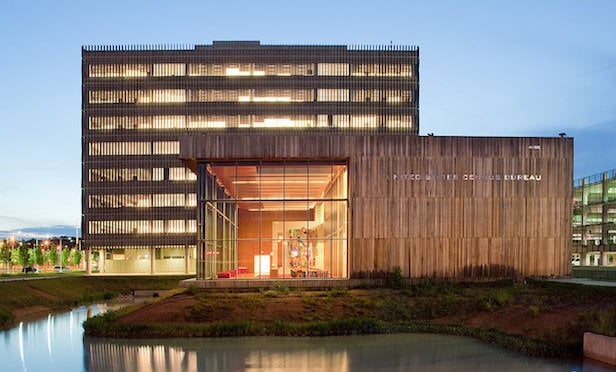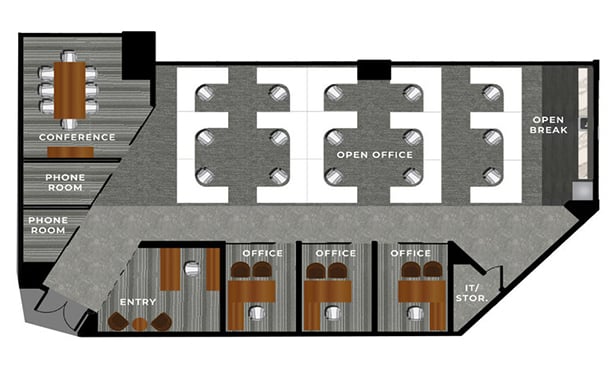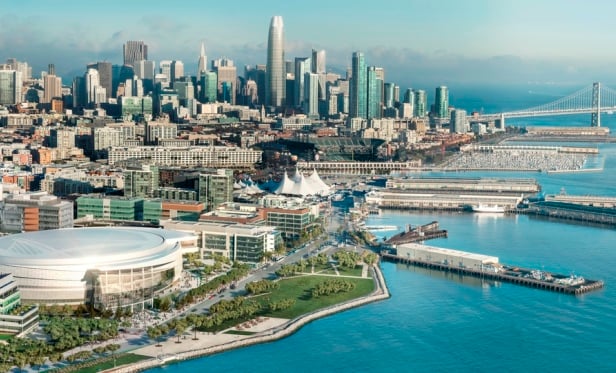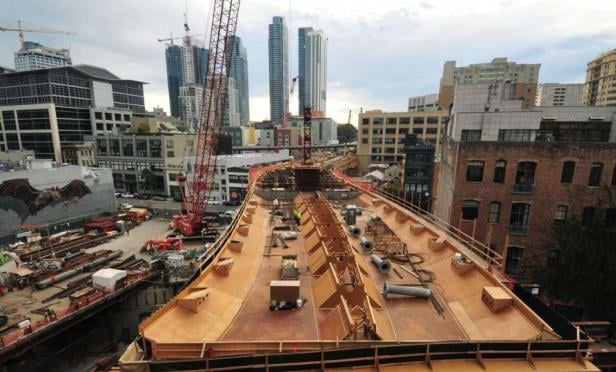
WASHINGTON, DC—Led by the residential sector, construction spending during February reached a seasonally adjusted annual rate of $1.193 trillion, the Census Bureau said Monday. It's the highest level since April 2006, although the rebound from the previous month's 0.4% drop was lower than economists' estimates.
February's annualized rate was up 3% from the year-ago period, as was the two-month total for January and February, when construction spending totaled $163.3 billion. However, the annualized rate's 0.8% uptick from January came in shy of economists' estimates calling for an increase of 1% or better.
Private construction's share of the February annualized total, $917.3 billion, was 0.8% above the revised January estimate of $910 billion. Residential construction was at a seasonally adjusted annual rate of $484.7 billion in February, 1.8% above the revised January estimate of $476.1 billion, with multifamily construction growing at a faster pace than single-family: up 2% and 1.2%, respectively, from January. Meanwhile, nonresidential's seasonally adjusted annual rate of $432.7 billion was up by 0.3% from January.
In February, the estimated seasonally adjusted annual rate of public construction spending was $275.5 billion, 0.6% higher than in January. The figure also represented a rebound after three consecutive months of declines, although it's down 8% on a year-over-year basis from the February 2016 annualized rate of $299.6 billion. State and local government spending rose 0.9% from January, while federal government construction spending was down 9% Y-O-Y.
Educational construction was at a seasonally adjusted annual rate of $71.7 billion, 0.5% above the revised January estimate of $71.3 billion. Highway construction rose 1.3% from January to an annualized $88.9 billion.
Public construction tallies for subsequent months are likely to be higher if and when the Trump administration's proposed infrastructure program is enacted. To date, though, the ambitious program, which seeks to spend up to $1 trillion over the next decade, hasn't materialized in the form of legislation.
“While the overall market for construction continues to expand, public investments remain down for the year and private nonresidential activity could be much stronger,” says Ken Simonson, chief economist with Associated General Contractors of America. “Two factors that are clearly holding back construction demand are relatively high effective tax rates for many businesses and uncertainty about future demand for public infrastructure upgrades.”

WASHINGTON, DC—Led by the residential sector, construction spending during February reached a seasonally adjusted annual rate of $1.193 trillion, the Census Bureau said Monday. It's the highest level since April 2006, although the rebound from the previous month's 0.4% drop was lower than economists' estimates.
February's annualized rate was up 3% from the year-ago period, as was the two-month total for January and February, when construction spending totaled $163.3 billion. However, the annualized rate's 0.8% uptick from January came in shy of economists' estimates calling for an increase of 1% or better.
Private construction's share of the February annualized total, $917.3 billion, was 0.8% above the revised January estimate of $910 billion. Residential construction was at a seasonally adjusted annual rate of $484.7 billion in February, 1.8% above the revised January estimate of $476.1 billion, with multifamily construction growing at a faster pace than single-family: up 2% and 1.2%, respectively, from January. Meanwhile, nonresidential's seasonally adjusted annual rate of $432.7 billion was up by 0.3% from January.
In February, the estimated seasonally adjusted annual rate of public construction spending was $275.5 billion, 0.6% higher than in January. The figure also represented a rebound after three consecutive months of declines, although it's down 8% on a year-over-year basis from the February 2016 annualized rate of $299.6 billion. State and local government spending rose 0.9% from January, while federal government construction spending was down 9% Y-O-Y.
Educational construction was at a seasonally adjusted annual rate of $71.7 billion, 0.5% above the revised January estimate of $71.3 billion. Highway construction rose 1.3% from January to an annualized $88.9 billion.
Public construction tallies for subsequent months are likely to be higher if and when the Trump administration's proposed infrastructure program is enacted. To date, though, the ambitious program, which seeks to spend up to $1 trillion over the next decade, hasn't materialized in the form of legislation.
“While the overall market for construction continues to expand, public investments remain down for the year and private nonresidential activity could be much stronger,” says Ken Simonson, chief economist with Associated General Contractors of America. “Two factors that are clearly holding back construction demand are relatively high effective tax rates for many businesses and uncertainty about future demand for public infrastructure upgrades.”
Want to continue reading?
Become a Free ALM Digital Reader.
Once you are an ALM Digital Member, you’ll receive:
- Breaking commercial real estate news and analysis, on-site and via our newsletters and custom alerts
- Educational webcasts, white papers, and ebooks from industry thought leaders
- Critical coverage of the property casualty insurance and financial advisory markets on our other ALM sites, PropertyCasualty360 and ThinkAdvisor
Already have an account? Sign In Now
*May exclude premium content© 2025 ALM Global, LLC, All Rights Reserved. Request academic re-use from www.copyright.com. All other uses, submit a request to [email protected]. For more information visit Asset & Logo Licensing.








